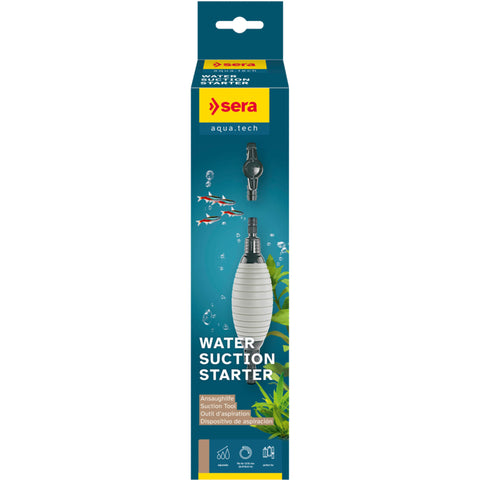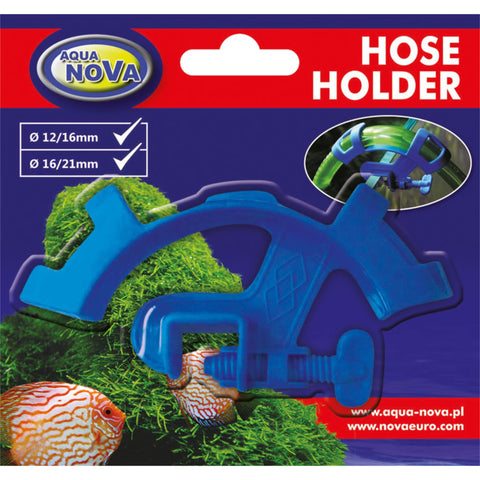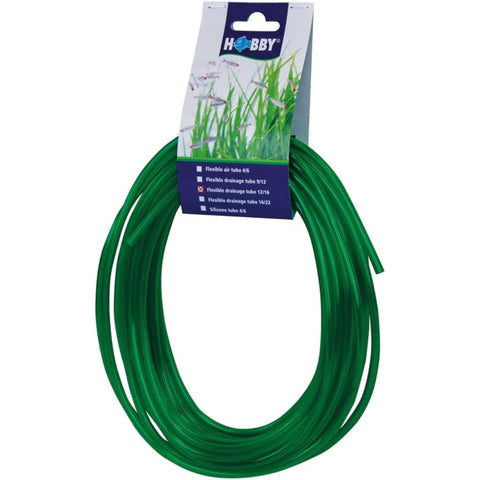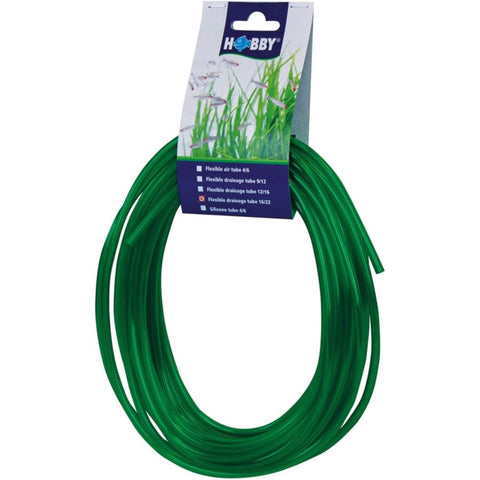9 products
Aquarium tubes
Aquarium tubes for aquarium filters, CO2 systems & air pumps
Aquarium tubes as filter tubes, CO2 tubes & air tubes
Aquarium tubes play a central role in aquaristics and are indispensable for the smooth operation of aquarium filters, CO2 systems and air pumps. They serve as connectors between the various components of the aquarium system and enable the safe and efficient transport of water, air and CO2. The right choice of high-quality tubes is of great importance to ensure the water quality, optimize the effect of the technical devices and promote the well-being of the aquarium inhabitants.
Filter tubes for aquarium filters
Aquarium filters are important for maintaining a healthy and intact aquarium ecosystem. The filters remove waste products, excess food and other impurities from the aquarium water. The tubes for aquarium filters are responsible for directing the aquarium water into the filter, after which the purified water is returned to the aquarium. They should be robust, flexible and resistant to chemicals to ensure the longest possible service life and unimpaired water quality. Transparent tubes are advantageous as they allow visual monitoring of the water flow.
CO2 tubes for CO2 systems
CO2 systems are often used in planted aquariums to provide the plants with the required carbon dioxide supply, which promotes their growth and colour intensity. The CO2 tubes must be gas-tight to prevent CO2 from escaping. In addition, these tubes should be flexible enough to allow easy installation and blend in with the aquarium's surroundings. Low resistance in the tube is also important to ensure even CO2 distribution.
Air tubes for air pumps
Air pumps are used to supply oxygen in the aquarium and are particularly important for fish and other creatures that depend on a sufficient supply of oxygen. The tubes for air pumps should be flexible and durable in order to efficiently transfer the pressure of the air produced. It is advisable to choose tubes with a certain amount of elasticity to reduce vibrations or noise. In addition, diffusers are available in various designs that can be attached to the end of the tube to further reduce the noise level.
Tube colours and their meaning
Tubes are available in different colours, and each colour can serve specific purposes. The most common colours include transparent and green tubes and hoses.
Transparent tubes
Transparent tubes are often used to make the flow of water or air in the aquarium visible. They are well suited to ensure that water or air flows freely and to make blockages or other problems easily recognizable. In addition, transparent tubes are the perfect complement to glassware, such as glass diffusers.
Green tubes
Green tubes can be used in an aquascape or planted aquarium to blend in better with the natural environment. They are less conspicuous than transparent or black tubes.
There are also other colours such as grey, black or blue. Other colours are less common in freshwater aquariums in this country, but can prove useful, for example for identifying the inlet or outlet of filters or pumps.
Material of the tubes
Different materials are usually used for aquarium tubes that are safe and resistant to water and the conditions in an aquarium. The most common materials for aquarium tubes are PVC (polyvinyl chloride) and silicone.
PVC / polyvinyl chloride
PVC tubes are widely used and economical. They are robust, durable and chemically resistant, making them water-neutral. They are often used for water transport, filter systems and ventilation systems.
Silicone
Silicone tubes are flexible, durable and resistant to water, chemicals and temperature fluctuations. They are also easy to clean. Silicone tubes are often used to transport air or CO2 in aquariums.
However, as silicone, like PVC, is not 100% CO2-tight, a small amount of CO2 can still escape through the tube walls. This is not normally a problem as long as the CO2 loss is minimal and the system maintains the desired CO2 concentration in the water.
Alternatively, the silicone tube can also be combined with other tube materials in conjunction with a CO2 system, i.e. the silicone tube is only used for the short section to the aquarium instead of over the entire length.
If you want to ensure that your CO2 system is as efficient as possible, choose a pressure-resistant and gas-tight CO2 tube. These tubes are often made of polyurethane (PU) or polyethylene (PE).
Polyurethane (PU) tubes are flexible, durable and have good CO2 resistance. High-quality PU tubes are able to withstand the pressure of the CO2 gas and minimise CO2 loss through the tube walls
Polyethylene tubes can also be used for CO2 systems, especially if they have a high density. PE tubes are chemically resistant and can withstand high pressures, making them a good choice for gas-tight applications.
Aquarium tube sizes
In addition to colour and material, the size of the tubes is of course relevant. Aquarium tubes are available in various sizes to meet the requirements of different aquarium systems. The tube size is indicated by the inner diameter and the outer diameter of the tube. The first number refers to the inner diameter and the following number to the outer diameter. The most common sizes of aquarium tubing include
- 4/6 mm tubes
This is a common size for CO2 tubes. The inner diameter is 4 mm, while the outer diameter is 6 mm. This size is suitable for connecting CO2 systems to diffusers or reactors. - 9/12 mm tubes
This size is often used for water transport and filtration systems. The inner diameter is 9 mm, the outer diameter 12 mm. This size is commonly used in many aquariums for pumps, filters and water exchange. - 12/16 mm tubes
Larger aquariums and systems often use this tube diameter. Thanks to the inner diameter of 12 mm in combination with an outer diameter of 16 mm, this tube size is suitable for more powerful pumps and filters in the aquarium. - 16/22 mm tubes
This size is used in larger aquariums or pond systems with a higher water flow. The inner diameter is 16 mm, the outer diameter 22 mm. - 22/28 mm tubes
This size is also used in larger aquariums or pond systems where higher water circulation is required. The inner diameter is 22 mm, the outer diameter 28 mm.
It is important to select the correct tube size for your specific needs as the tube diameter will affect the water flow, pressure and overall performance of the system. Therefore, when choosing a tube, make sure it is compatible with your filters, pumps and other devices. An incorrectly sized tube can lead to performance problems.
The right choice of tubes for aquarium filters, CO2 systems and air pumps is essential for the well-being of the aquarium inhabitants and the health of the ecosystem. It is advisable to purchase high-quality tubes to ensure high quality and functionality. In addition, the tubes should be checked regularly for wear and damage to prevent possible leaks. Proper care and maintenance of the tubes contribute significantly to the long-term efficiency of the aquarium technology and allow aquarists to enjoy the spectacle of the aquatic world in all its splendour.
If you have any questions or require further information on the products we offer, we will of course be happy to assist you with our expertise.













